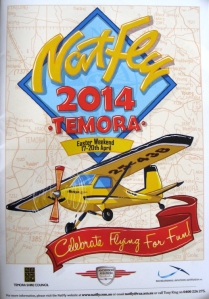 For extreme bush flying – and by this I mean river bed landings, rocky hill tops and so-on – there’s no substitute for a tail dragger with huge main wheels and a smaller one at the back. And a pilot with considerable skill and experience.
For extreme bush flying – and by this I mean river bed landings, rocky hill tops and so-on – there’s no substitute for a tail dragger with huge main wheels and a smaller one at the back. And a pilot with considerable skill and experience.
But for most types of bush and farm flying, a suitable tricycle gear aircraft will do the job just as well – and in some conditions better than – a typical tail dragger.
Specifically, let me introduce you to the Aeroprakt A22 Foxbat – a tricycle gear aircraft with a tail wheel.
The Foxbat is a 2-seat light sport aircraft – an LSA – which will take you into many places you just cannot go in a conventional tri-gear plane. And it is an aircraft that enables reasonably competent, medium time pilots to handle cross winds like no tail dragger possibly can.
For a start, it’s rugged and strong. As well as full fuel it will carry around 200 kilos of people and baggage.
The CofG is close to the main wheels, so you can lift the nose off the ground at standstill or very slow speeds – this lets you run the plane down a rough paddock on its main wheels, with the nose wheel and prop well clear of trouble in the form of ruts, stones and even small shrubs.
The Foxbat lifts off in around 75 metres, even fully loaded, so there’s no long ground roll to punish the landing gear.
And getting back on the ground is just as quick and easy. You land at about 35 knots and you can hold the nose wheel clear of the rough stuff down to walking pace. Even better – unlike a typical tail dragger – you have nose wheel steering if and when you need it. The Foxbat nose wheel is steered directly through the rudder pedals, not relying on differential brakes. And there’s always the tailwheel to help you protect the rear of the aircraft in extreme cases!
There are farm based Foxbats operating out of rough strips and paddocks all over Australia. A couple have over 5000 hours on them in these conditions and many over 2000 hours. All of which attests to the longevity and toughness of the aircraft.
Who needs a tail dragger? Not me!
 The annual Recreational Aviation jamboree is happening as usual over Easter 2014 at Temora Airfield, NSW. Dates for your diary: 18 & 19 April are the main visitor days. Thursday 17 April is arrival day, Sunday 20 April is departure day. So you don’t miss out – note that most aircraft and exhibitors depart on Sunday morning!
The annual Recreational Aviation jamboree is happening as usual over Easter 2014 at Temora Airfield, NSW. Dates for your diary: 18 & 19 April are the main visitor days. Thursday 17 April is arrival day, Sunday 20 April is departure day. So you don’t miss out – note that most aircraft and exhibitors depart on Sunday morning!

